Fifth Republic
1. Organizational Changes
The four stated policy objectives of the Fifth Republic were the localization of democracy, the realization of social welfare, the fortification of a just society, and educational and cultural innovation. President Chun Doohwan repeatedly invoked these principles in his state of the union addresses, speeches to the National Assembly, and other public remarks, and especially stressed security and economic development as priority policy issues (Ahn, 1982). This increasing emphasis on security led to the creation of Department 4 in the Public Safety Headquarters (PSHQ) on June 19, 1981, complete with Intelligence Divisions 1, 2, and 3 as well as the Counter-Communism Division. The occupation of the Konkuk University campus by protesters in 1986 led the government to reinforce the police’s counter-communism capacities and roles by newly creating Counter-Communism Departments 1, 2, and 3.
The Maritime Security Division in Department 2 was abolished and replaced with the Combat Police Management Division on January 21, 1984, while Investigation Division 1 was reorganized into the Investigation Division, and Investigation Division 2 into the Criminal Affairs Division. The organizational reform of January 28, 1986, led to significant increases in the size of the police organization and in human resources.[1]
2. Functional Changes
The Fifth Republic introduced 29 new tasks into the police organization, 60 percent of which pertained to maintaining social order; 29 percent, to reducing crime; 8 percent, to improving traffic safety; and 2 percent to ensuring the fair distribution of police resources and the fair allocation of burdens each.
The general tendency of the Fifth Republic to emphasize security, both external and internal, naturally prioritized maintenance of social order as the most important aspect of police work (60 percent). The number of intelligence and counter-communism organizations, standing at only one each at the end of the Fourth Republic, dramatically increased in the Fifth Republic to include five departments and 14 divisions. New intelligence organizations were set up to gather information on political, economic, social, educational, cultural, and religious activities. Counter-communism now included investigation of not only suspected and actual spies in and outside the country, but also intelligence-gathering on and investigation of individuals suspected of espousing left-leaning ideologies. The sheer size of counter-communism personnel multiplied over three-fold from 1,563 in 1980 to 4,715 in 1987.
Crime reduction (29 percent) was another significant concern of the police during this period, as the Fifth Republic organized and launched a wide range of measures aimed at “societal purification” and realizing a “just society.” In particular, the Chun administration created the Social Purification Committee, made vigorous efforts to root out corrupt government employees, and locked up socially undesirable individuals in the infamous “Samcheong Moral Enlightenment Camp.” The police organization, therefore, tailored its activities to these ends, concentrating its resources on rounding up gangsters, and arresting and investigating bureaucrats charged with corruption and bribery (NPA, 1994, 716).
Private bodyguards became more common after the enactment of the Security Industry Act in 1976. The number of bodyguard agencies multiplied explosively, especially after major international sporting events were organized in Korea, including the Asian Games of 1986. The police organization was thus newly tasked with providing instruction for private security and bodyguard service agencies.
[Figure 2-5] Changes in the Police Organization in the Fifth Republic
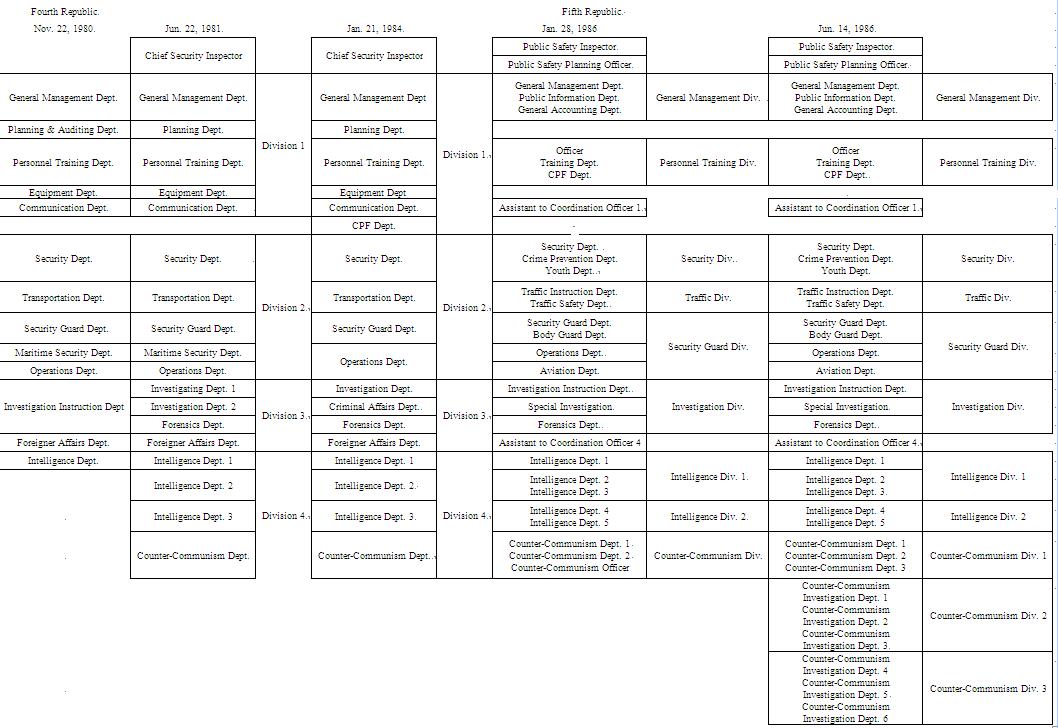
[Table 2-11] Police Principles and Aims in the Fifth Republic
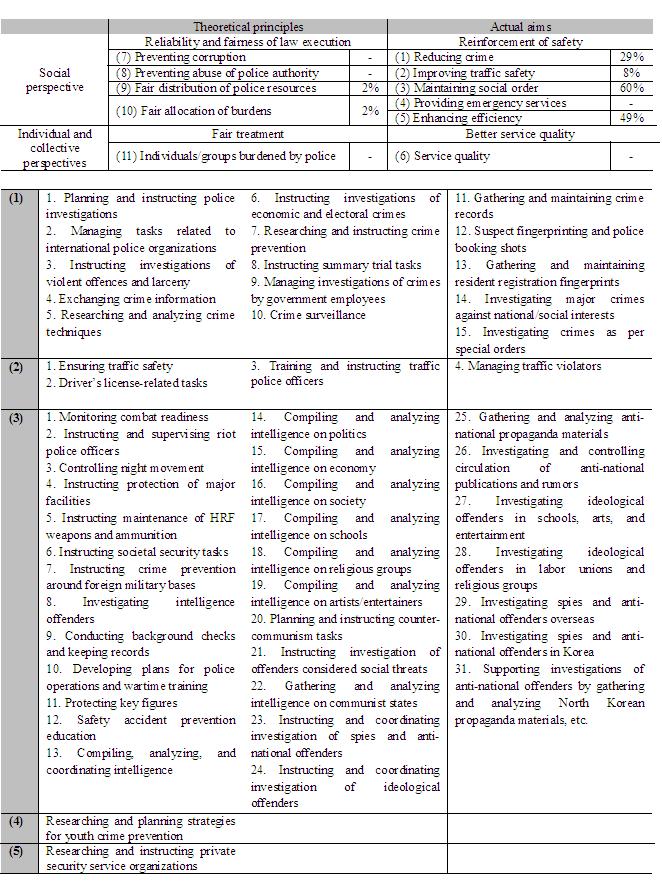
[Table 2-12] Guidelines for PSHQ Directors General in the Fifth Republic
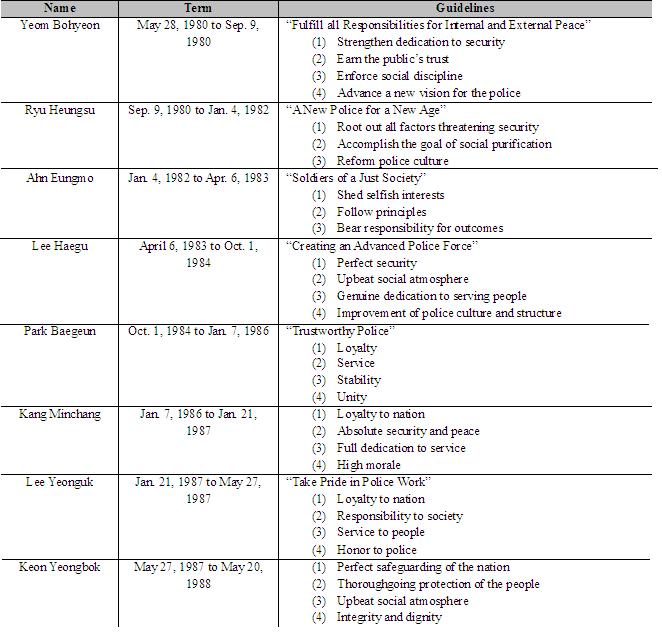
[Table 2-13] Changes in Police Functions and Tasks in the Fifth Republic
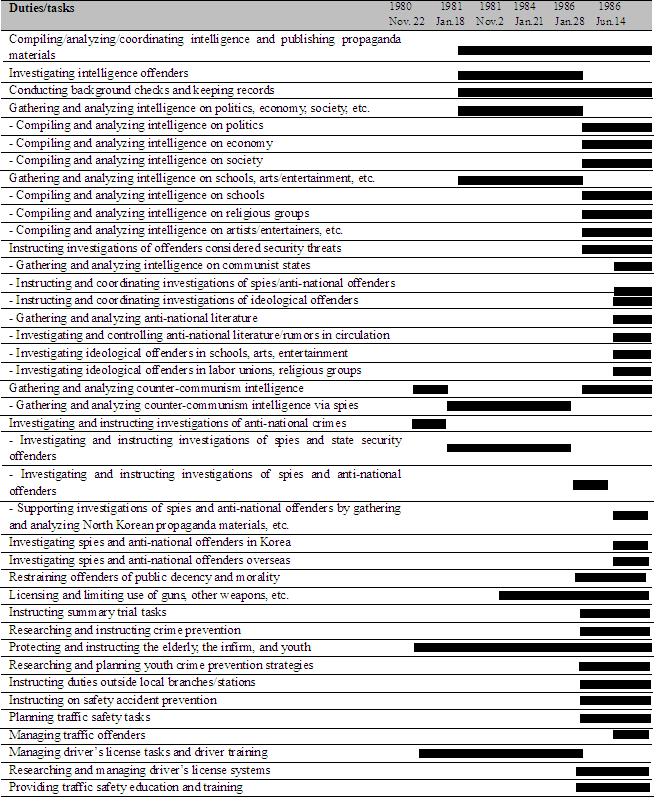
Source: Korea Institute of Public Administration. 2008. Korean Public Administration, 1948-2008, Edited by Korea Institute of Public Administration. Pajubookcity: Bobmunsa.
Sixth Republic
1. Organizational Changes
The Sixth Republic proclaimed the following three principles as the guiding objectives of its policies and actions: (1) promote the advancement of Korean politics; (2) achieve national reconciliation and solidarity; and (3) raise Korea’s profile and stature on the world stage. In the Cabinet meeting held on May 9, 1988, President Roh Taewoo emphasized that his government would “usher in an age of greatness for ordinary people,” and named national self-sufficiency, democratic reconciliation, balanced development, and reunification for prosperity as the four major pillars of policymaking. The intent to promote the interests of ordinary people led to a significant contraction of the police organization, which was reduced to four divisions in the Intelligence Bureau and five divisions in the Security Bureau by the end of Roh’s term in office.
In the meantime, however, the rate of larceny and sexual assault (especially against women) had multiplied by 183.3 percent between 1980 and 1989. The situation led to more reform in the police organization in 1989 (as set out in Presidential Decree 12768 of August 7, 1989), with the expansion of the two divisions of the Criminal Affairs Department into the three divisions of the Violent Offence Department.
2. Functional Changes
The Sixth Republic introduced 29 new tasks into the police organization, 28 percent of which concerned maintaining social order; 26 percent, enhancing efficiency; 23 percent, reducing crime; 11 percent, improving traffic safety; and 7 percent, preventing the abuse of police authority.
Maintaining social order yet again figured as the top-priority issue in police work. As the instruction guidelines in Table 2-15 show, “protection of the liberal democratic order,” “establishing social stability,” and “enforcing strong social discipline” were advocated as the main goals of police action.
Though the sizes of the intelligence and counter-communism divisions apparently shrank, their operational emphases more or less remained the same. The intelligence units continued to gather and analyze intelligence on political, economic, and social activities as well as on schools and religious groups, and even gained a greater intelligence-gathering scope when it began to include labor unions and other such associations in its investigations. As for counter-communism, the tasks of investigating spies and anti-national offenders in Korea and abroad were merged into a single task of investigating spies and anti-national offenders irrespective of their locations, while other aspects of the counter-communism division remained the same. Tasks relating to foreigner affairs, once handled by the Security Bureau, were transferred to the newly created Office of the Foreigner Affairs Officer in the Sixth Republic, which developed and organized activities for countering espionage among foreigners.
Enhancing efficiency became the second most important concern of the police organization after the Public Safety Headquarters (PSHQ) became a part of the National Police Agency (NPA).
In the meantime, the police organization was endowed with a much greater range of tasks relating to subduing, investigating, and preventing violent crimes (murder, burglary, larceny, and various forms of assault), white-collar crimes, and drug trafficking, with President Roh declaring “a war on crime” in his public address on October 13, 1990. The Civil Security Countermeasures Task Force came into being two days later as part of the Office of the Coordination Officer 3 (incorporated into the Violent Offence Division on August 1, 1991). With the PSHQ now elevated and expanded into the NPA, the police underwent another major organizational overhaul, with the investigation and violent offence departments under Coordination Officer 3 merged with the Criminal Affairs Bureau. The position of the Criminal Affairs Review Officer was newly created to provide better support for the bureau head. The six divisions of the bureau (i.e., investigation, inquiry, criminal affairs, violent offence, assault, and examination) were renamed as Investigation Divisions 1 and 2, and the inquiry, criminal affairs, violent offence, and examination divisions.
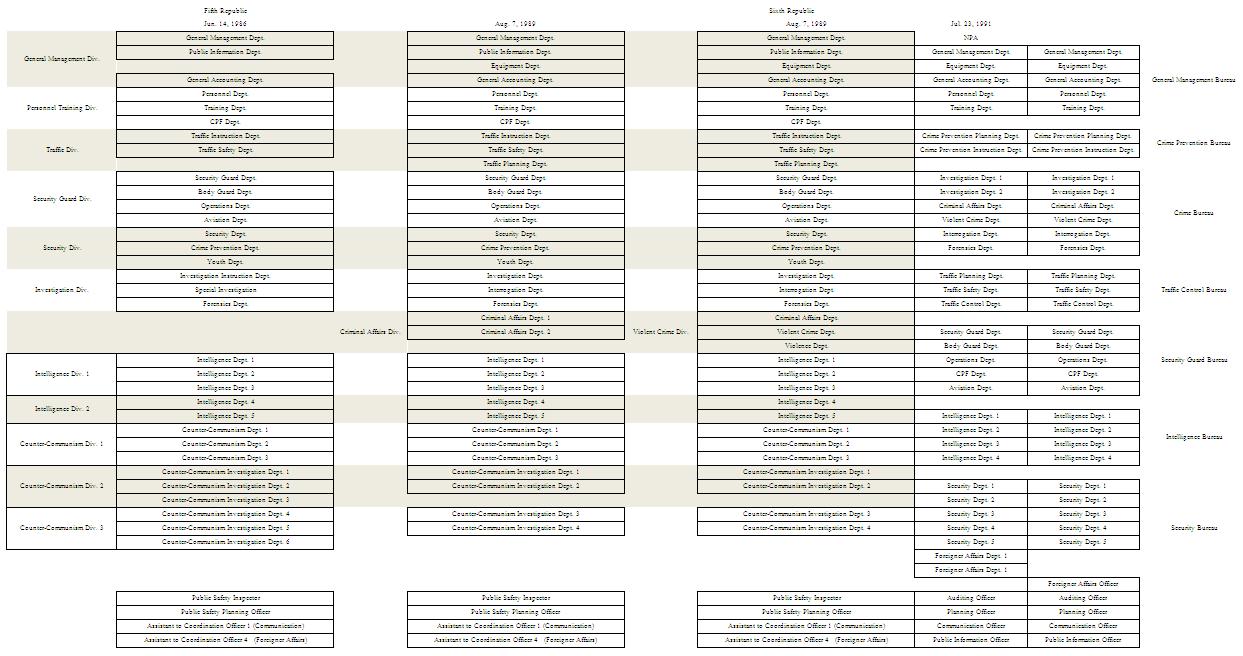
[Figure 2-6] Changes in the Police Organization in the Sixth Republic
[Table 2-14] Police Principles and Aims in the Sixth Republic
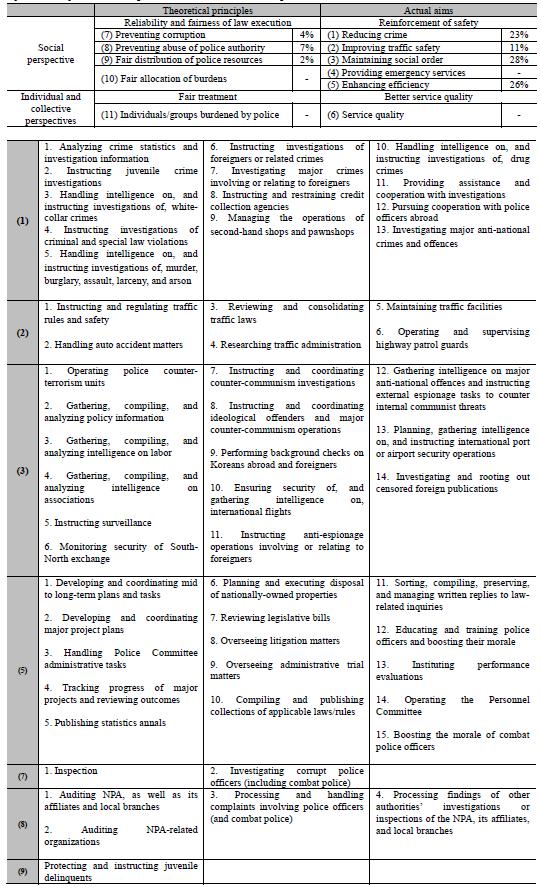
[Table 2-14] Guidelines of PSHQ/NPA Chiefs in the Sixth Republic
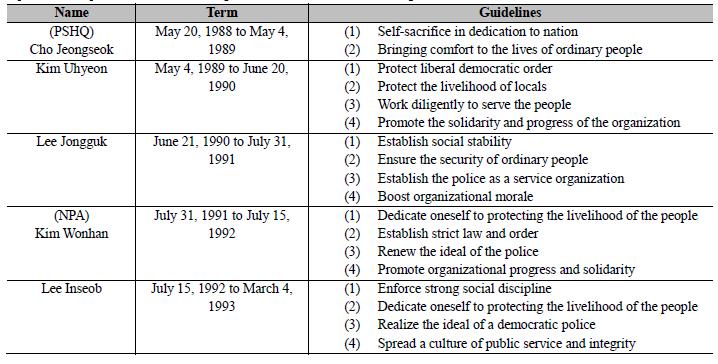
[Table 2-16] Changes in Police Functions and Tasks in the Sixth Republic
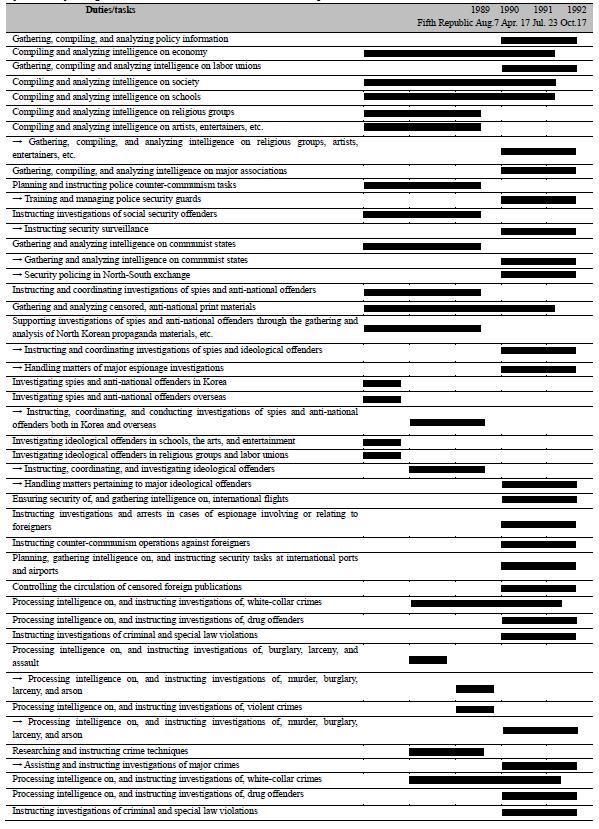
Source: Korea Institute of Public Administration. 2008. Korean Public Administration, 1948-2008, Edited by Korea Institute of Public Administration. Pajubookcity: Bobmunsa.
Kim Youngsam Government
1. Organizational Changes
The so-called “Civilian Era” dawned in Korea when Kim Youngsam took office. This was a period of greater realized democracy beyond the “procedural democracy” that had ruled in past eras, as the Kim administration came to power by replacing members of the core elite with individuals who genuinely adhered to democratic ideals (Kim, 1994).
In his inaugural address, President Kim promised “the creation of a new Korea,” and proposed corruption elimination, economic recovery, and state discipline as the three main aims of reforms. Kim further articulated the four major policymaking pillars of his administration as: (1) elimination of corruption; (2) dissolution of the legacy of violence and authoritarianism; (3) consolidation of democracy; and (4) creative reforms for the 21st century.
Aspiring to a “small government,” the Kim administration’s principal focus was on government downsizing and deregulation, which entailed reducing the police organization as well. The organizational reform of May 4, 1994, led to the closure of the general management, violent offence, traffic control, and security 5 divisions. The administration of maritime affairs, until then dispersed among 16 ministries and departments, was centralized in the newly created Ministry of Maritime Affairs and Fisheries under the amended National Government Organization Act (NGOA) of August 8, 1996. The Korea Coast Guard (KCG), which was under the NPA’s umbrella until then, was transferred to the purview of the new ministry.
2. Functional Changes
The Kim Administration introduced 28 new tasks into the police, 50 percent of which concerned maintaining social order; 39 percent, with enhancing efficiency; and 6 percent with reducing crime and improving service quality each. Security units and divisions were downsized yet retained most of their roles and tasks. The investigation of major ideological offenders broadened in scope to include investigations of spies and security offenders in schools, the arts and entertainment, politics, and religious groups, a task later referred to as “investigations of spies and other security offenders.” Thus the number and proportion of police tasks related with maintaining social order actually increased during this time.
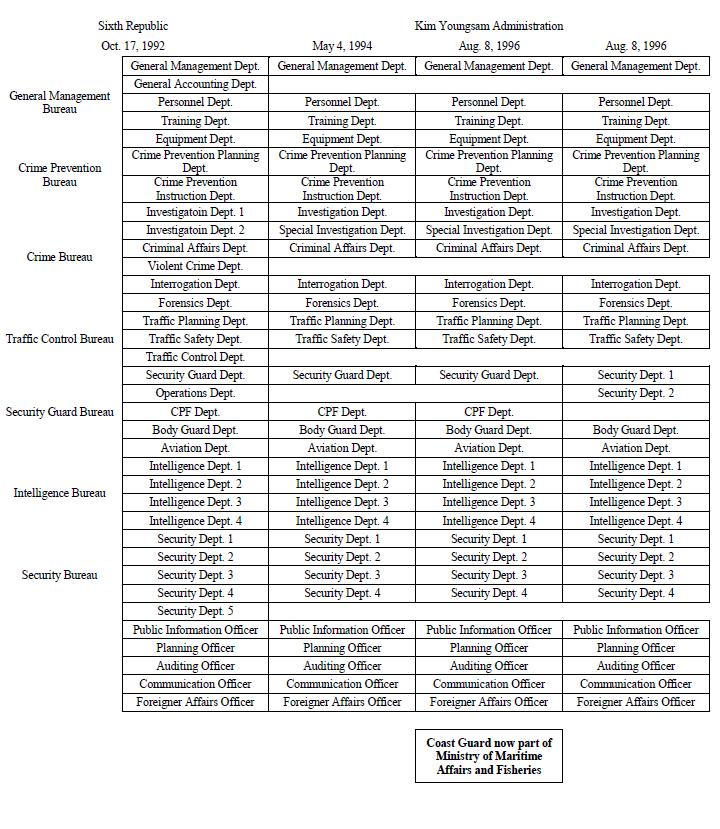
[Figure 2-7] Changes in the Police Organization under the Kim Youngsam Administration
[Table 2-17] Police Principles and Aims under the Kim Youngsam Administration
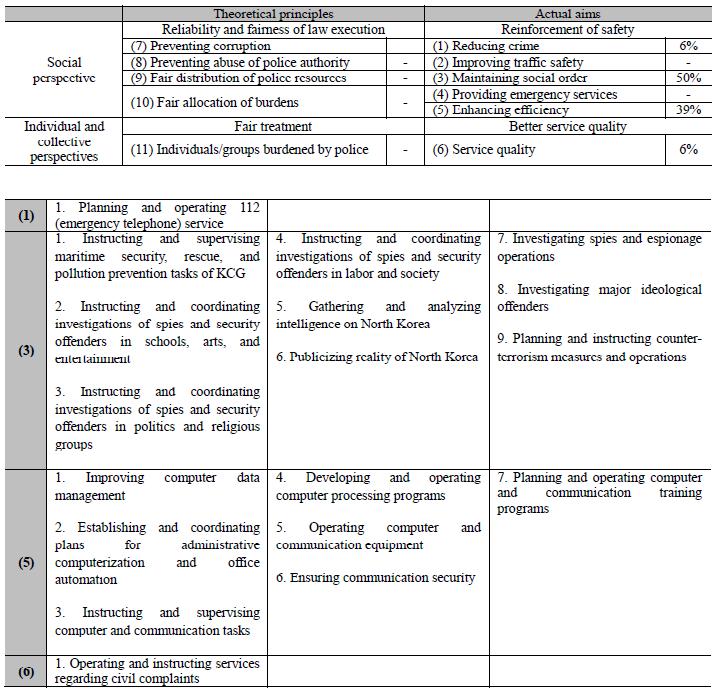
[Table 2-18] Changes in Police Functions and Tasks under the Kim Youngsam Administration
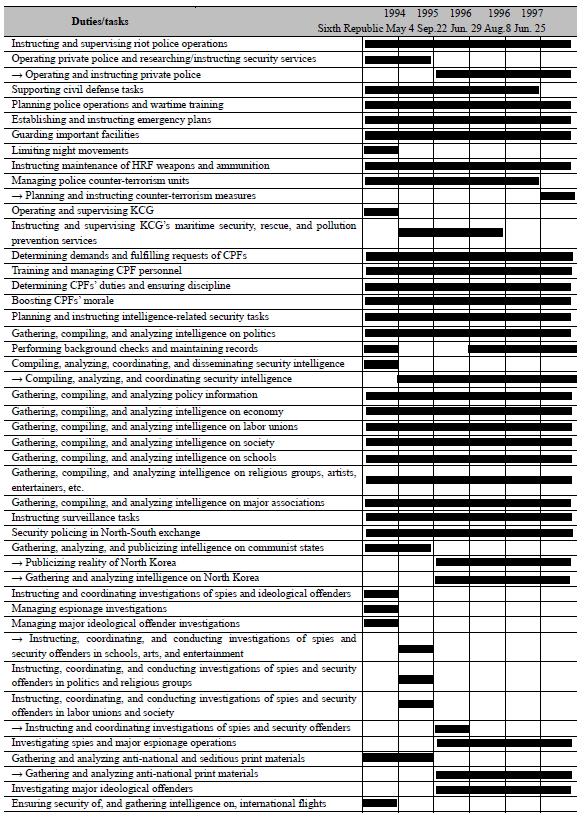
Source: Korea Institute of Public Administration. 2008. Korean Public Administration, 1948-2008, Edited by Korea Institute of Public Administration. Pajubookcity: Bobmunsa.
